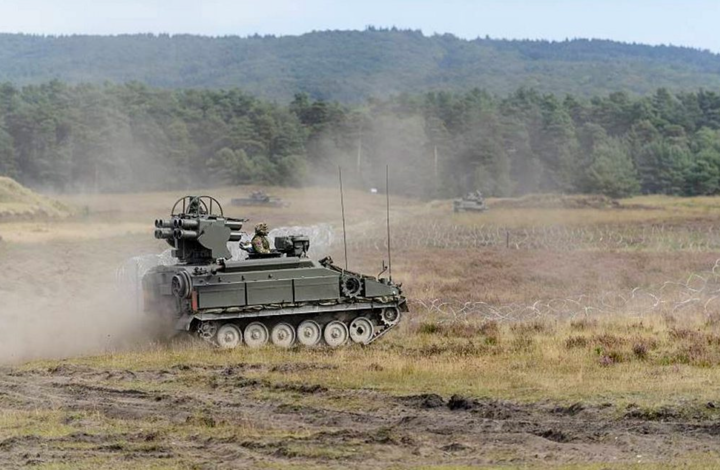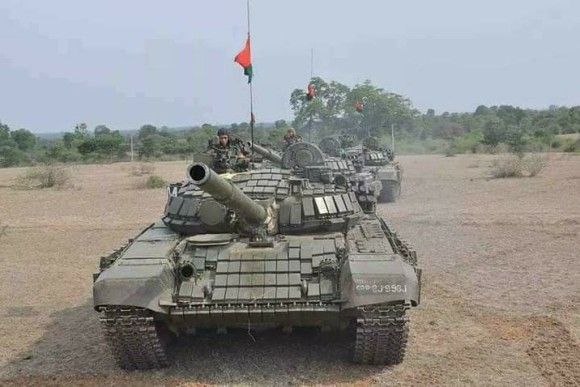Armed Forces
“Test Year for the Decisions Made in Warsaw” Challenges for NATO - 2017 [5 Critical Areas]
NATO, next year, will face a need to implement and maintain in force the provisions of the summit in Warsaw, making it possible to efficiently reinforce the Eastern Flank. This may be not possible, due to a number of relevant factors related to the pressure imposed by Russia or factors of a political profile. At the same time, NATO will have to continue steps leading towards a long term strategic adaptation, also in the light of the upcoming summit in Brussels. Will NATO be able to face the challenges emerging during the upcoming year?
During the year 2016, without any doubts, the summit in Warsaw was the most significant event for the North Atlantic Treaty Organization. This is because decisions were made there, which are to establish permanent presence of combat units of the NATO alliance at the Eastern Flank. The individual member states are also making more and more brave steps, the goal of which would be to reinforce their own units or increase the defence expenditure.
Even though the aforesaid steps, especially in the western part of Europe, are not taken at a rapid pace, they are a proof of awareness and willingness to counteract, in the light of the emerging threats, arising in case of the member states. In 2017, NATO will also have to face several challenges which may have an influence on the process of implementing the provisions of the summit in Warsaw.
-
Election in Key NATO Member States and Following Ramifications
Next year, in some of the key NATO member states, election is planned, which may, in a potentially negative manner, change the attitude of the authorities of those countries towards the process of reinforcing the NATO military strength. In France, Presidential and Parliamentary election is planned, Bundestag is going to be elected in Germany. In the former case, even if Marine Le Pen, who is openly pro-Russian, does not take over the leadership, a tendency may be reinforced to question the NATO activities. The current government, led by Francois Hollande, was quite reserved when it came to reinforcement and, even though a careful attitude was adopted, this was criticized, due to “too clear” stance taken, when it came to the relations with Moscow. On the other hand, in Germany, as a result of the migrants crisis, Alternative fur Deutschland party is becoming more and more popular, while pro-Atlantic CDU/CSU, coalition-tied SPD (usually endorsing the reinforcement, even in spite of pro-Russian statements made by some of the members) are gradually becoming less popular. Gaining the majority by the AfD is not very probable, but the fact that another party, following the left wing Die Linke which is openly pro-Russian and which questions the purpose of the NATO’s existence, emerges in the Bundestag is very disadvantageous, just as the scenario of coalition between Die Linke, SPD and Greens is. Regardless of the results, the election will probably weaken the stable and strong pro-Atlantic majority within the parliament. Bundestag is very important in Germany, when it comes to the defence and security policy, or even when it comes to the operational use of the Armed Forces, should a potential threat for NATO emerge.
-
Terrorism, Migrants Crisis, and Their Impact on the Internal Situation.
Paradoxically, the immigration crisis and the acts of terror have a major impact on the NATO’s readiness to establish collective defence capacity. First, the soldiers of the frontline units from Belgium, Italy or France are delegated to patrol and provide security in the urban areas which, in a natural manner, limits their readiness to carry out other tasks. A threat of even higher significance is seen in the rising popularity of populists who are against NATO or EU integration and, often, openly supporting the Russians. This is caused by a number of errors made by the European institutions (e.g. making it more difficult to expand the rights of the secret services, so required to act against the threat of the current scale) and by the mainstream politicians. The best example here is seen in the Angela Merkel’s Wilkommenskultur , and limited options of taking actions by the services, should the illegal immigrants breach the law. This applies e.g. to the citizens of the Northern African countries, who, theoretically, have no right to asylum granted, however controlling their movement in Europe is virtually impossible, due to the reserved stance adopted towards breaking the law exhibited both by the courts, as well as by the content of the law (Anis Amri acts in Berlin serve the best example here). This, on the other hand, drives the European citizens towards the populists. The Eastern Flank may be hit “by a ricochet”, due to the connections seen between Russia and the extreme left- and right-wing parties.
-
Russian Zapad 2017 Exercise – Pressure Imposed on NATO and Belarus
Russia plans to carry out the Zapad 2017 military exercise next year, which is expected to involve even 90 thousand soldiers. The experts at the Atlantic Council/NATO Source have noted that the said exercise may be targeted against the expanded forward presence – NATO battalion combat teams in the Baltic States and Poland. One cannot rule out a situation in which Moscow takes aggressive steps, e.g. when it comes to the information policy. We also know that Russia is planning to deploy more than 4000 train carriages of equipment to Belarus. It may also be plausible then that, justifying it with the exercise, Russia would force the Belarusian president to accept establishment of permanent military bases within the territory of Belarus, of which he has been an opponent so far. We may also see Moscow making attempts of influencing Minsk in a different manner. At the moment, the Belarusian leadership is opposing the permanent presence of large Russian military units within the country, which is criticized by Moscow and which is partially beneficial for NATO, since it delimits the risk of escalation. Zapad 2017 exercise may change the aforesaid situation. It shall also be noted that potential pressure imposed on Belarus would be less costly for Moscow, in comparison with any aggressive steps taken directly against NATO, even though the latter scenario cannot be ruled out.
-
Implementation of the Provisions of the Warsaw Summit within the Armies...
NATO Armed Forces are currently in the process of implementing the provisions of the Warsaw summit. This means that certain elements form battalion groups (relevant exercise involving those elements has been recently organized e.g. in Germany), and they are soon going to remain active within their areas of responsibility. At the same time, NATO is going to emphasize the reinforcement and recovery of readiness of the main forces (forces that are not deployed to maintain forward presence or units that are not a part of the QRF). All of the steps above would be demanding at different levels within the armies and MoDs of the individual NATO member states. This is especially critical, as the cuts (recently stopped, in their majority) concerned the areas which, following the Moscow’s aggression against the Ukraine, are considered to bear the highest significance. Meanwhile, the armed forces of the individual NATO member states are also burdened, e.g. with deployments in the Middle East. Thus, the current implementation of the documents of the summit, contrary to what one may have thought, may be a difficult task, not only when it comes to the units in case of which high readiness is expected, but also when one speaks of the main forces of the NATO alliance.
-
...and further strategic adaptation.
Following the NATO summit in Warsaw, both the NATO structures, as well as the individual member states, all need to continue the reforms. Some of the experts suggest that a need emerges to develop a new NATO strategic concept. Moreover, NATO relations with Turkey are also questionable. There, a summit is to be organized in 2018. Doubts also arise when it comes to the decision making process or the commanding bodies. Furthermore, the NATO member states themselves shall continue and intensify the process of reconstructing their own defence capabilities or expanding their defence budgets. Long term lags, fused with expansion of the Russian military strength, make recovering the proper level of capabilities costly and time-consuming. This requires determination within the scope of making and implementing tough political decisions in an unstable environment.

NATO, since several years, has been struggling and trying to carry out a strategic adaptation. The Warsaw Summit has, in most cases, defined the directions for such adaptation, but this is just the first step. Creating a proper defensive potential requires multi-faceted steps to be taken. Numerous circumstances suggest that political stability of the NATO member states may be of key relevance, for the aforesaid process. The said stability is one of the founding elements of coherence, demonstrated during the summit in Warsaw. At the same time, the external threats are still active, including the threat posed by Russia. Thus, 2017 would be a true test for the provisions of the Warsaw Summit. We should hope that NATO passes this test, providing a high level of security to the member states.


